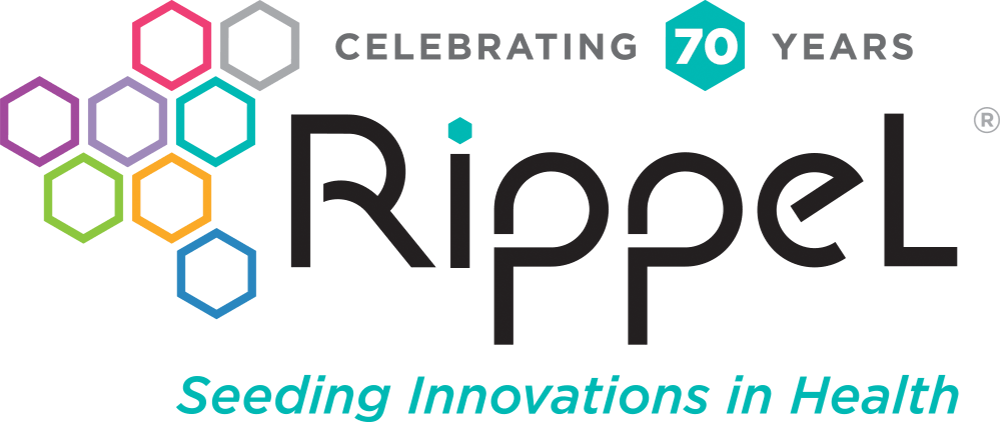The Stew BLOG
Human Services Help Communities Make the Most of Safety Net Programs
Health care alone is not sufficient to create robustly healthy communities. Rather, the social conditions in which people live, and the health behaviors that flow from these conditions, exert the most profound impact on health and well-being. In the U.S., the poorest among us will live, on average, 7-to-15 years less than the most affluent. Similarly, people who live in poor and segregated communities can anticipate dying 10-to-15 years earlier than those who live in nearby communities with greater degrees of wealth. Achieving health requires a focus on equity. These fundamental insights drive ReThink Health and a broad movement across the country to move beyond questions of how to increase access to and quality of health care services to consider health system transformation in communities as a strategy to achieve better health.
Addressing the inequalities that influence the health of communities needs to happen at different levels—federal, state, local, and community. Many exciting efforts (e.g., Building Healthy Communities, 100 Million Healthier Lives, Moving Health Care Upstream, BUILD Health Challenge, among others) are focused on increasing capacity at the community level. The National Academies of Sciences, Engineering, and Medicine (NASEM) recently concluded, “communities have agency to promote health equity.” The same NASEM report also highlighted that “community-based solutions are necessary but not sufficient.” Community transformation can only occur when the federal and state policies on which communities can build are aligned. Human services organizations typically execute these federal and state policies at the community level, and can be engaged as essential partners in transforming community systems of health.
Federal and state policy is a fundamental component of community transformation
Why aren’t community-based efforts enough to accomplish transformation on their own? Let’s look at food, for example. Access to food is a necessary condition for health. Indeed, the fundamental metric for official poverty in the U.S. is based on the premise that the cost of a basic diet should not exceed one-third of a household’s income. Being cognizant of the importance of food to survival and health, and recognizing that many Americans don’t have enough money to pay for food along with other necessities, many communities–including their health care systems–have created food pantries and expanded farmers’ markets, and they offer free meals to help those most in need. These programs help those who receive this food at no or lower cost. Yet, all of these voluntary, local efforts pale in magnitude to the support provided by federal nutrition programs (i.e., created by federal policy). Roughly 95 percent of all nutrition support in the U.S. derives from the Supplemental Nutrition Assistance Program (SNAP) and other federal programs (e.g., the Special Supplemental Nutrition Program for Women, Infants, and Children, or WIC; the National School Lunch Program; etc.).
We can also examine how federal policy provides an essential foundation for creating healthy communities by looking at child care and early childhood education. Both longstanding social science data and more recent neurobiology research findings highlight the benefits of intervening early in a child’s life in order to improve educational success, employment, pro-social behavior, income, and health. In addition, when women have access to child care they are more likely to become employed, with the attendant benefits to income, well-being, and health for them and their children. While far from meeting the full need of children ages five and under living in households below the federal poverty level, the Head Start program and child care subsidies provided through the child development block grant underwrite a portion of the costs of early care and education services for one-third to one-half of children in need. This level of access would be extremely difficult for any community to provide in the absence of federal support.
Improving access to healthy foods and to high-quality child care and early education are two high-leverage strategies to promote community health and well-being, and are frequently areas of focus for community-based health systems transformation activities. These local efforts can only be successful if they can build on aligned federal-level investment. Communities that expand on the solid foundation set-up by federal policy can set themselves on a more positive trajectory. Without such a foundation, social conditions will be that much harder to improve and health equity that much further out of reach, despite the tremendous assets that communities and their residents bring and the creativity and skill that partnerships offer.
Human services programs translate federal policy to community programs and services
Communities can leverage federal investments by partnering with state and county human services organizations, which administer federal or federal/state anti-poverty and community development programs. For many programs, government agencies contract with local service organizations, which then interact directly with community members. This human services system is the mechanism through which many anti-poverty policies are translated into on-the-ground programs and services that address individual, family, and community needs.
The scope of human services is broad and encompasses different programs in different jurisdictions. These include programs that strive to protect vulnerable populations from harms such as food insecurity, housing instability, and abuse and neglect. In addition, they seek to help people provide for themselves, thrive, and contribute to society by providing job training, mentorship, child care and early education, and the like.
Communities and states can supplement these human services programs with additional funding and by connecting people to the programs, streamlining eligibility, addressing barriers to access, making sure programs operate in ways that affirm rather than detract from human dignity, and coordinating among programs so that individuals who qualify and are engaged in one program (e.g., public housing) receive other services that enhance health and economic mobility (e.g., child care).
Health Care – Human Services Partnerships Provide Clues About the Way Forward
Several ongoing studies are seeking to characterize the nature of partnerships between health and human services programs in communities that are working to transform their health systems. While we wait for formal results, I’d like to offer my observations of how these partnerships between health care and human services are taking shape, recognizing that however they look now, these partnerships will undergo rapid change as federal and state policies in both health and human services evolve, and as current integration efforts reach more mature stages.
To show Medicaid agencies how they can use their current funding flexibility to support new approaches to prevention, Nemours has developed a “roadmap” that is also useful in describing the spectrum health and human services partnerships. The “Roadmap of Medicaid Prevention Pathways” indicates that early-stage partnerships are focused at the individual patient/resident level, and entail either traditional or non-traditional providers of clinical and safety net services. Later-stage partnerships involve structured partnerships focused on improving the conditions of an entire geographically defined population and, ultimately, including shared funding and accountability for population-level results.
At early stages in this schema, health care providers may screen individual patients for social conditions such as food insecurity, housing instability, and interpersonal violence. The American Academy of Pediatrics, for example, has recommended that its members screen for such conditions and has provided tools and resources—in some cases in concert with advocacy organizations such as the Food Research and Action Center (FRAC)—to facilitate this process. The American Academy of Family Physicians has similar policy statements encouraging its members to identify such social risk, while its policy research center has created tools for using geo-coded data that document community conditions.
Just as you can’t fatten a cow by weighing it, you can’t improve social conditions by screening without action. Although health care professionals may be uniquely positioned to identify social services needs among their patients, they are typically ill equipped to know what services are available and best suited to meet these needs. Similarly, human services agencies may not be familiar with the “referral” process used in health care, and may, therefore, be unsure about how to respond to a referral from a community health center. In response, different intermediary organizations—HealthLeads, Healthify, Pathways Community Hub, Help Me Grow, and others—develop relationships with human services programs and facilitate referrals. Other health care sites employ community health workers or developmental/resource specialists that facilitate these connections. Some actually provide services; for example, by creating a food pantry on site or using the waiting room as a locale for signing up patients for benefits such as SNAP and the earned income tax credit.
These models, important as they are, typically consider one individual at a time and do not necessarily rest on deep organizational partnerships between the health care provider organization and community based organizations. They often operate on a transactional basis, an approach that is likely to be suboptimal. Taking an integrated approach to improving community-level health and well-being requires a broader partnership and deeper relationship across sectors and organizations. Such partnerships rest on shared goals, a common understanding of community assets and needs, integrated data, ongoing infrastructure, adequate financing, an approach to making changes and innovation, and the other elements identified in ReThink Health’s Pulse Check.
Success also requires understanding the assets that different organizations bring to the table, and the challenges that they confront. For example, many community-based organizations have far lower pay scales and less sophisticated data systems than health care systems. That said, substantial efforts are underway to improve both community and governmental human services data systems and tools are available to help strengthen the overall capacity of human services community-based organizations. On the other hand, community-based organizations typically have closer ties to the community and a greater appreciation of the strengths and capabilities in that community than do health care systems. Building trust among organizations based on a mutual appreciation of assets and transparency about shortcomings is foundational.
The work of transforming communities into places that allow residents to thrive will be hard and complicated. Strong partnerships with human services will be necessary if our nation is to return to a more positive health trajectory than we now are experiencing. What are your experiences with communities working in partnership with human services? What is necessary for such partnerships to be successful?

